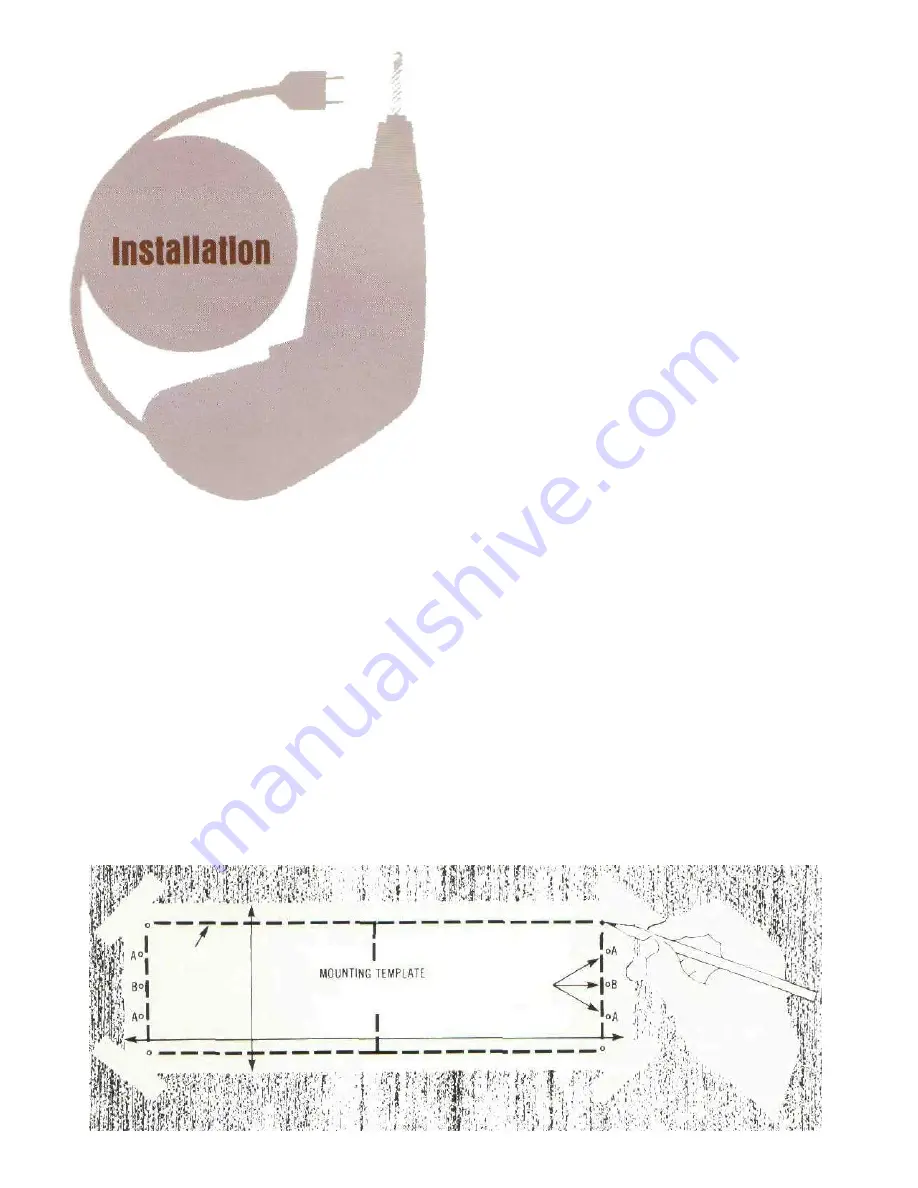
tion the instrument can be mounted in any position.
The recommended minimum space for installation
is 15 inches (38.1 cm)deep, 17 inches (43.2 cm) wide,
and 6 inches (15.2 cm) high.
To install the instrument in a Mclntosh cabinet,
follow the instructions that are enclosed with the
cabinet for any other type of installation, follow
1. Open the carton and remove the PANLOC brack-
ets, hardware package and mounting template. Re-
move the MC 2155 from the plastic bag and place it
upside down on the shipping pallet then unscrew
the four plastic feet from the bottom of the chassis.
these instructions:
2. Mark the cabinet panel
Place the mounting template in the position on the
cabinet pane! where the instrument is to be install-
ed, and tape it in place. The broken lines that repre-
sent the outline of the rectangular cutout also repres-
sent the outside dimensions of the chassis. Make
sure these lines clear shelves, partitions or any
equipment. With the template in place, first mark the
six A and B holes and the four small holes that
locate the corners of the cutout. Then, join the four
corner markings with pencil lines using the edge of
the template as a straight edge.
3. Drill Holes
Use a drill with a 3/16 inch bit held perpendicular to the
panel and drill the six A and B holes. Then, using a drill
bit slightly wider than the tip of your saw blade, drill
one hole at each of two diagonally opposite corners.
The holes should barely touch the inside edge of the
penciled outline. Before taking the next step, make
sure that the six A and 8 holes have been drilled.
4. Saw the Panel Cutout
Saw carefully on the inside of the penciled lines.
First make the two long cuts and then the two short
cuts. After the rectangular opening has been cut out.
use a file to square the corners and smooth any
irregularities in the cut edges.
The PANLOC system of installing equipment con-
veniently and securely is a direct result of Mclntosh
research. By depressing the two PANLOC buttons
on the front panel, the instrument either can be lock-
ed firmly in place or it can be unlocked so that the
chassis can slide forward, giving you easy access to
the top and rear panels.
The trouble-free life of an electronic instrument is
greatly extended by providing sufficient ventilation
to prevent the build-up of high internal temperatures
that cause deterioration. Allow enough clearance so
that cool air can enter at the bottom of the cabinet
and be vented from the top. With adequate ventila-
2



















